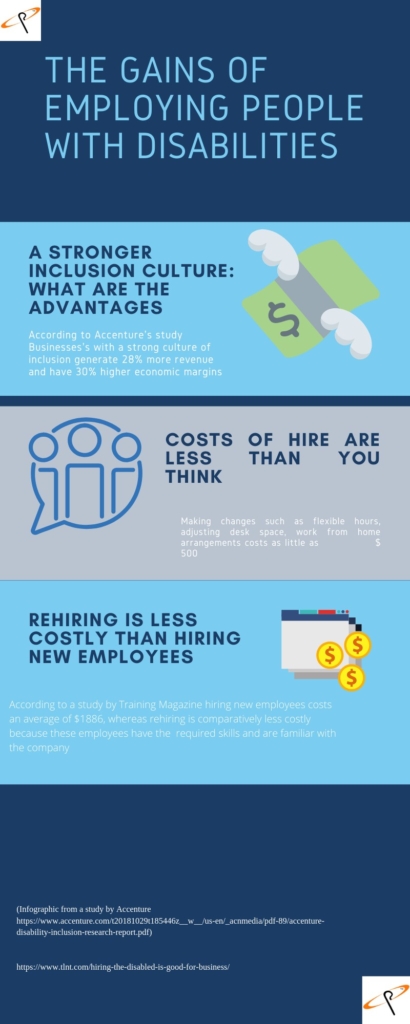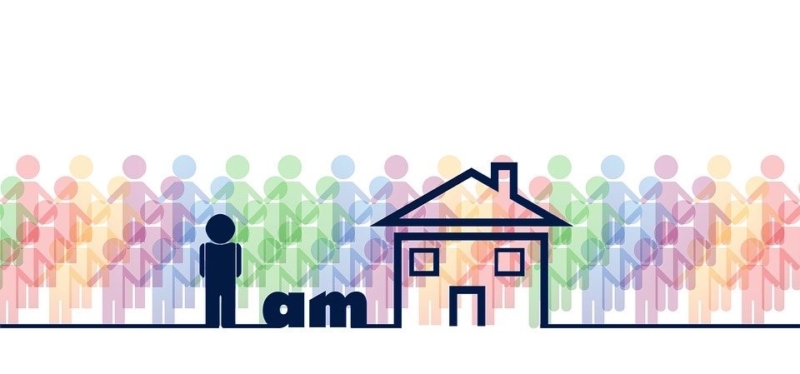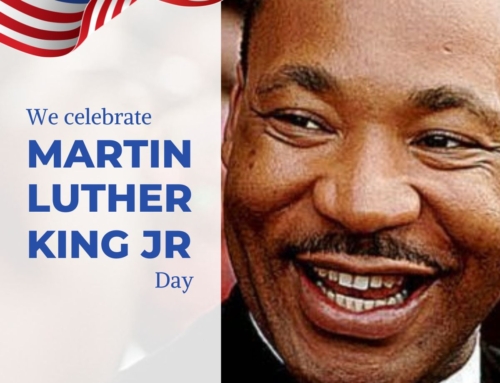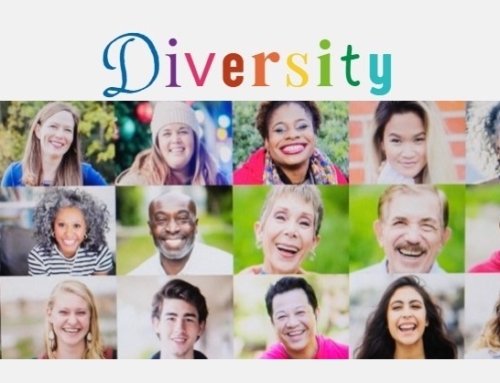Identifying and hiring skilled talent is always a challenge, it is even tougher when unemployment is at a record low of 3.8%. In this candidate-driven market, the competition is even fiercer to identify suitable candidates. Hiring managers everywhere are asking themselves the same question “Is there an untapped candidate pool or solution that we have not considered?”
According to an article in the August edition of USA Today, the answer to this question is, yes. There is a pool of people that often struggle to find employment, those with disabilities or intellectual developmental disabilities.
A 2018 report by The Bureau of Labor Statistics showed “the employment-population ratio was 19.1% among those with a disability.” This was “in contrast to the employment-population ratio for those without a disability at 65.9%.” These statistics suggest that discrimination and stereotypes are still factors in the hiring process which can lead to people with disabilities experiencing social isolation.
The question of why hiring managers often ignore this segment of the population has a lot to do with making major adjustments to the workplace, and a fear of the unknown.
Fortunately, this is changing slowly, but positively.

The trend of inclusion is gathering pace
According to Charisse Jones, writing for USA Today, “institutional investors, including 15 state treasurers have called on businesses whose shares they own,” to give precedence to hiring qualified candidates with disabilities. (https://www.usatoday.com/story/money/2019/08/12/after-8-years-what-got-her-out-house-new-job-and-respect/1511830001/)
Some of the nation’s largest companies are making accommodations such as fine-tuning their interview processes, posting signs in braille around their offices, and adjusting office spaces to support new and current employees with physical, neurological or emotional challenges.
Three ways to make your hiring process more accessible
- Make the application process accessible for all
Hiring departments tend to assume that all candidates can type or use the mouse without difficulty. However, this could be a barrier for some qualified candidates.
If someone applies that has dyslexia, or is visually impaired—does your electronic application process have screen reader software compatibility?
- Ensure your office space has a universal design
Making a change, even a small one, can make all the difference. Professor of Disability Studies at Stoney Brook University, Pamela Brock (cited by Lindsey Updyke writing for Ripplematch.com), says that companies need to ensure all their applicants share the same experience at all stages of the hiring process, regardless of mental or physical challenges.
Questions for employers to consider
- Is your office space and location accessible for all? Consider this when coordinating your onsite interviews, showing applicants the workspace, or meeting areas.
- Does your office building have stairs and no elevator? Make sure that each interview is in an office or meeting room on the ground floor and easily accessible. Also, consider the accessibility of your building’s main entrance and parking.
Phone or Skype Interviews
The majority of companies first screen candidates through an initial phone call or skype interview. This may be an obstacle for applicants with impaired hearing. There are steps to ensure companies, do not “miss out on” qualified talent.
Questions for employers to consider
- Does your company have TTY? TTY is a text-based system that enables applicants that are hard of hearing to conduct a conversation over the phone.
- How does TTY technology work? The user types a message on their laptop. The individual letters of the typed message change into electrical signals. Once the message reaches the destination, the user on the other end of the line, the electrical signals change back into a written message.

Salesforce using videos as a tool for inclusion
- Among the Fortune 100 Best Companies to Work For is Salesforce, which has developed an innovative strategy to promote inclusion among their employees and customers. Their initiative includes “4 Pillars: equal opportunity, equal education, equal pay, and equal rights” followed by taking action.”
Salesforce realized that talking about the issues surrounding inclusion only goes so far, what is needed is the implementation of action-driven initiatives. As a part of their campaign, Salesforce has created powerful emotion evoking videos that focus on the personal experiences of their employees.
The videos feature candidate statements that help stimulate important debates about areas often thought of as “taboo.” Dana Brownlee’s article in Forbes.com provides the following examples:
“Sometimes you walk into a room and you just don’t fit in.”
“It feels like you’re an outsider. And it hurts to be an outsider.”
“There’s a lot of fear, and fear is a consuming emotion. Fear is a distracting emotion.”
“I just want you to acknowledge that I exist.”
These videos enable discussions that promote an understanding of differences and a stronger feeling of mutual belonging.
(Salesforce scripted cited in an article by Dana Brownlee “Workplace Inclusion: 3 Innovative Strategies For Moving From Talk To Action” https://www.forbes.com/sites/danabrownlee/2019/10/01/workplace-inclusion-3-innovative-strategies-for-moving-from-talk-to-action/#49acc8ab746e)
Johnson & Johnson communicating a culture of inclusion
- For Johnson & Johnson communicating inclusion is crucial to their culture and vision. At every stage of training, they accentuate the values of diversity and inclusion. Throughout the year Johnson & Johnson review their talent processes. Whether they are doing a goal-setting meeting, conducting mentorship conversions between managers and staff, or a mid-year review, Johnson & Johnson always ensures the distribution of training resources that emphasize inclusion and diversity. The training aims to help employees be more inclusive of others and avoid damaging biases.
AT&T giving credence to every voice
- At AT&T there is “a true culture of inclusion where every voice is heard.” According to Cynthia Marshall, senior vice president, human resources, and chief diversity officer, this is one of the reasons for the company’s success in diversity and inclusion initiatives. Part of AT&T’s inclusion strategy over the last decade has been to develop employee resource groups called ERGs, and employee networks called ENs. ERGs supply support to nonprofit groups by offering education, mentoring and encouragement to underrepresented groups including people with disabilities, generations, and military veterans.
- Among the goals of AT&T’s inclusion strategies is to provide a platform for people to share ideas and perspectives and allow AT&T employees to learn about people from different cultures, backgrounds, and demographics. The involvement of company leaders in these groups enables employees to connect with mentors and role models. Marshall says that company leadership participation and “behavior modeling” is an essential building block to establishing a diverse and inclusive culture.
Companies can reap benefits from hiring people with disabilities
Research by Accenture shows that companies with solid disability and inclusion practices outperform others, “achieving 28% higher revenue and 30% higher economic profit margins.” For more details of this study, see the infographic below:
The Accenture study “Getting to equal: The disability Inclusion Advantage” cited in the article “Hiring the Disabled is Good for Business “by Duane Winiarski for TLNT Talent Management and HR https://www.tlnt.com/hiring-the-disabled-is-good-for-business/)”

The way forward: A culture of inclusion and diversity
Todaythere is a paradox in the employment market. On the one hand, employment is at a record high. On the other hand, there are still sections of the population who struggle to find employment such as those with disabilities. Even though society is increasingly advancing in scientific research and technological innovation, there are still inherent biases and stereotypes to overcome. Research from Accenture shows companies that ignore these stereotypes and promote inclusion succeed in terms of increased revenue and positive economic profit margins. Why don’t more companies follow the lead of AT&T and Johnson & Johnson?
Implementing a culture of inclusion starts with the hiring process. Professor of Disability Studies at Stoney Brook University, Pamela Brock says companies need to make sure all applicants have the same experience throughout the employment process from the initial screening interview to the onsite interview. Companies that implement changes such as ensuring interviews are on the ground floor, or technology that eases the application process creates a feeling of mutual belonging and a place all employees want to participate.
If you are an organization with a passion and drive to develop an inclusive culture and diversity, here are some ideas to get you started: https://www.whatcanyoudocampaign.org/where-to-learn-more/resources-for-employers/







